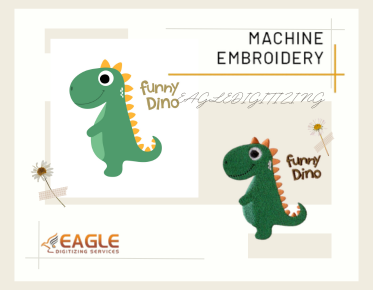Thread Breaks, Misalignment & Pulling? 90% of the Time It’s a Digitizing Issue
Embroidery is a craft that combines art and precision, yet even the most skilled embroiderers encounter issues such as thread breaks, misalignment, and fabric pulling. These problems can be frustrating, but did you know that embroidery digitizing is often the root cause? Understanding the intricacies of digitizing can help mitigate these common issues and enhance the quality of your embroidery projects.
Understanding Embroidery Digitizing
Embroidery digitizing is the process of converting artwork into a digital file that an embroidery machine can read. This file dictates the path of the needle, the sequence of stitches, and the density of the embroidery. A well-digitized design ensures that the embroidery machine operates smoothly, producing a high-quality finished product.
The Role of Digitizing in Thread Breaks
Thread breaks are a common issue in embroidery, often caused by poor digitizing. When a design is not digitized correctly, the machine may encounter excessive needle penetrations or abrupt changes in direction, leading to increased tension and ultimately, thread breaks. Ensuring that your design is digitized with smooth transitions and appropriate stitch density can significantly reduce the occurrence of thread breaks.
Misalignment: A Digitizing Dilemma
Misalignment occurs when the stitches do not line up as intended, often resulting in a distorted design. This can be due to improper hooping, but more often, it is a digitizing issue. If the digitized file does not account for fabric stretch or machine movement, the design may shift during embroidery. By adjusting the digitizing process to include compensation for these factors, you can achieve better alignment in your embroidery projects.
Fabric Pulling and Its Connection to Digitizing
Fabric pulling, or puckering, is another issue that can be traced back to digitizing. When a design is too dense or lacks underlay stitches, the fabric may gather or pull, creating an uneven surface. Proper digitizing involves balancing stitch density and using underlay stitches to stabilize the fabric, preventing pulling and ensuring a smooth finish.
Best Practices for Effective Digitizing
To avoid these common embroidery issues, it is essential to follow best practices in digitizing. This includes using high-quality digitizing software, understanding the properties of different fabrics, and continuously testing and refining your designs. Additionally, working with experienced digitizers or utilizing professional embroidery digitizing services can provide valuable insights and improve the quality of your embroidery.
Choosing the Right Digitizing Software
The choice of digitizing software can greatly impact the quality of your designs. Software that offers advanced features such as automatic stitch generation, fabric simulation, and error detection can streamline the digitizing process and reduce the likelihood of errors. Investing in reliable software is a crucial step towards achieving professional-grade embroidery.
Testing and Refining Designs
Even with the best digitizing practices, testing your designs is essential. Running a test stitch-out allows you to identify and correct any issues before starting the final project. This step is crucial for ensuring that the design translates well from the digital file to the physical fabric.
Conclusion: The Future of Embroidery Digitizing
As technology advances, the field of embroidery digitizing continues to evolve. New software developments and machine capabilities offer exciting possibilities for more intricate and precise designs. By staying informed about these trends and continuously improving your digitizing skills, you can overcome common embroidery challenges and create stunning works of art. Eagle Digitizing excels in providing professional embroidery digitizing services, ensuring every design is crafted with unmatched precision.



